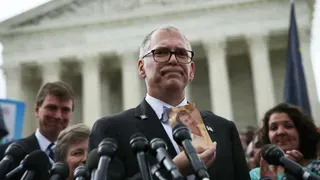February 13, 2016
U.S. Retail Sales Rise as Consumers Shrug Off Stock Price Drop
Christopher S. Rugaber READ TIME: 2 MIN.
U.S. retail sales rose modestly in January, evidence that Americans kept shopping despite sharp drops in stock prices.
The Commerce Department said Friday that retail sales increased a seasonally adjusted 0.2 percent last month, the same as in December. Excluding the effect of falling gas prices, sales rose 0.4 percent.
Sales in December were revised higher from an initial estimate of a 0.1 percent drop.
Steady hiring and early signs that employers are finally handing out higher wages means that Americans have more money to spend. A key question for the economy this year is whether consumer spending can keep growing and offset the impacts of stock market volatility and slowing growth overseas.
Americans stepped up their purchases in January of autos, home supplies and groceries, and spent more online. They spent less at restaurants and bars, likely because of harsh snowstorms on the East Coast.
The retail sales report provides the first indication each month of Americans' spending, which drives 70 percent of the economy. Yet retail sales account for only about one-third of all spending, with services such as haircuts and Internet access making up the other two-thirds.
On Wednesday, the National Retail Federation forecast above average sales this year, citing better hiring and wage increases, as well as lower gas prices. It forecasts retail sales will increase 3.1 percent in 2016, higher than its 10-year average of 2.7 percent.
Gas prices averaged $1.70 a gallon nationwide Thursday, according to AAA. That's down 27 cents in just the past month.
Cheap gas is dragging down the overall retail sales figures, which include gas but don't account for price changes. Excluding the impact of cheap gas, retail sales rose 4.5 percent in January from 12 months earlier. That was the best year-over-pace since September.
A key question for consumers this year will be how much they spend of the money left over from cheap gas, and how much they sock away in savings. Last year, they saved more than many economists expected, restraining growth.
Total consumer spending __ which includes services __ was unchanged in December, the government said earlier this month, after a big gain in November. That pushed the saving rate to 5.5 percent in December.





